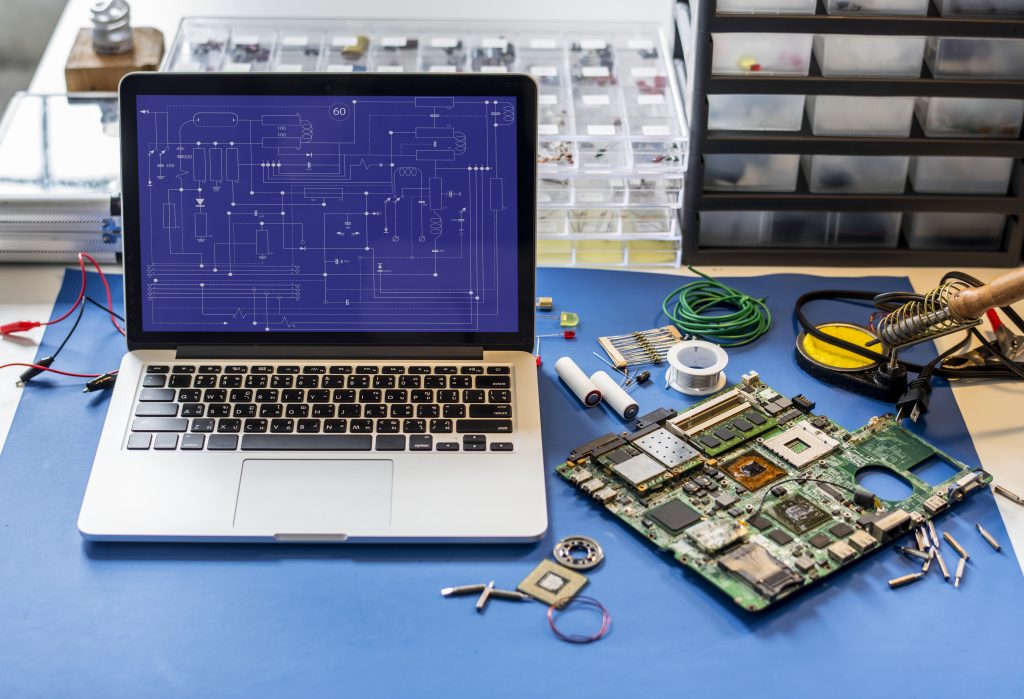Like the heart of a complex machine, the kernel serves as the core program of an operating system, managing resources and ensuring smooth operation. But is it hardware or software? This question has intrigued many, and in this article, we will embark on a journey to explore the depths of the kernel’s identity. By examining its functions and characteristics, we will shed light on this enigma, and you won’t want to miss it. Get ready to unravel the mystery and gain a deeper understanding of whether the kernel is hardware or software.
Definition and Purpose
The definition and purpose of the operating system and kernel are essential to understanding their role in computer functionality. The kernel is the core program of an operating system that controls the system and converts user requests into machine language. It is responsible for managing computer resources such as memory, disk, and tasks. The kernel also provides the interface between applications and hardware, allowing them to communicate effectively. It is an integral part of the operating system and is essential for its functionality.
The kernel can be categorized into two types: kernel hardware and kernel software. Kernel hardware refers to the physical components of the computer system that are managed by the kernel, such as the CPU, memory, and input/output devices. Kernel software, on the other hand, refers to the software components of the operating system that are responsible for managing and controlling the hardware resources. Both kernel hardware and kernel software work together to ensure the smooth functioning of the computer system.
In terms of functionality, the kernel performs crucial tasks such as memory management, process management, and device management. It ensures that the computer system has enough memory to run applications, manages the execution of processes, and controls the communication between applications and hardware devices. The kernel also provides a secure and efficient interface that allows users to interact with the computer system.
Core Functions
Now let’s explore the core functions of the kernel, which are essential for the smooth operation of the operating system. The kernel acts as the bridge between the hardware and software components of a computer system. It provides the necessary functionality for managing system resources, such as memory, disk, and tasks. The kernel is responsible for translating user commands into machine language, allowing applications to communicate with the hardware. It also handles process management, ensuring that tasks are allocated the necessary resources and executed efficiently. Additionally, the kernel provides a crucial interface between the application and hardware, allowing for seamless interaction and data transfer. In essence, the kernel is the backbone of the operating system, responsible for managing and coordinating the various components to ensure the proper functioning of the computer system. Its management and interface capabilities are critical for the overall functionality of the operating system.
Types and Varieties
Types and varieties of operating systems and kernels cater to specific needs and have their own advantages and disadvantages. Here are some key points to consider:
- Operating Systems:
- Single OS, multiuser OS, multiprocessor OS, real-time OS, and distributed OS.
- Each type caters to specific needs and system requirements.
- Advantages: Provides flexibility, supports different hardware platforms, and allows for multitasking.
- Disadvantages: Can be complex, may require more resources, and can be vulnerable to security threats.
- Kernels:
- Monolithic and micro kernels.
- Each type has its own advantages and disadvantages.
- Advantages: Offers better performance and efficiency, allows for easier customization, and provides better security.
- Disadvantages: Can be less stable, may have limited functionality, and can be more difficult to develop.
Comparing operating systems and kernels, it is important to note that the operating system encompasses the entire software package, including the kernel. The role and functionality of the operating system is broader, managing software and hardware resources, facilitating communication, and providing an interface between the user and the hardware. On the other hand, the kernel is the core component responsible for managing computer resources, translating user queries, and providing an interface between applications and hardware.
The choice of operating system and kernel depends on the system requirements and desired functionalities. They both have an impact on system performance and play a crucial role in ensuring the proper functioning of the computer system.
Relationship to Operating System
As we continue our exploration of operating systems and kernels, let’s now shift our focus to understanding the relationship between the two. The kernel plays a crucial role in the overall functioning of the operating system. It acts as the core program and key element of the operating system, responsible for managing computer resources and providing an interface between applications and hardware. On the other hand, the operating system manages computer software and hardware resources, facilitates communication with the computer, and provides an interface between hardware and the user.
To further understand the relationship between the kernel and operating system, let’s compare their components and roles in a table:
| Kernel | Operating System |
|---|---|
| Core program | Manages software and hardware |
| Manages resources | Facilitates communication |
| Provides interface | Ensures system security |
| Translates user queries | Manages memory, disk, and tasks |
| Provides interface between user and hardware |
It is important to note that the kernel is an integral part of the operating system, without which the operating system cannot function properly. The development of a kernel involves designing and implementing the core functionalities required for the operating system to run smoothly. Overall, the kernel and operating system work together to ensure the efficient functioning of a computer system.
Importance and Dependence
The kernel is a key element of the operating system, playing an essential role in its functionality. The importance and reliance on the kernel can be seen in the following ways:
- Necessity: The kernel is necessary for the operating system to function properly. It is responsible for managing computer resources such as memory, disk, and tasks. Without the kernel, the operating system would not be able to perform these crucial functions.
- Significance: The kernel provides the interface between applications and hardware, allowing users to interact with the computer. It translates user commands into machine language and ensures the smooth operation of the system. The significance of the kernel lies in its ability to enable the functionality of the operating system.
- Reliance: The operating system relies heavily on the kernel for its functionality. Without a functioning kernel, the operating system would not be able to manage resources, communicate with hardware, or provide a user interface. The reliance on the kernel is evident in the fact that all operating systems require a kernel to run.
Definition and Functionality
To understand the functionality of the kernel, it is important to define its role within the operating system and how it contributes to the overall system’s performance and capabilities. The kernel is the core program of an operating system and is responsible for controlling the system and converting user requests into machine language. It is a key element of the operating system and is integral to its functionality. The kernel manages computer resources such as memory, disk, and tasks, and provides an interface between applications and hardware. Unlike hardware, the kernel is a software component that can be customized for specific system requirements. Its main functions include memory management, process management, and device management. The kernel plays a crucial role in the overall performance of the operating system by efficiently managing system resources and providing a bridge between user applications and the underlying hardware. Therefore, while the kernel is a software component, it plays a critical role in the functioning of the hardware and the overall system.
Scope and Complexity
Scope and complexity of the kernel within the operating system can vary depending on the specific system requirements and the overall design of the operating system. Here are some key aspects to consider:
- Portability challenges: The kernel needs to be portable across different hardware platforms, which can pose challenges due to variations in architecture and hardware capabilities. Ensuring compatibility and efficient performance on different platforms requires careful design and implementation.
- Kernel customization: The kernel can be customized to meet specific hardware platform or application needs. Customization allows for optimization and fine-tuning of the kernel’s functionality, resulting in improved performance and efficiency for specific use cases.
- Kernel design principles: The design principles employed in the kernel architecture play a crucial role in determining its scope and complexity. The design should prioritize modularity, scalability, and maintainability to accommodate future changes and enhancements.
- Kernel performance optimization: Achieving optimal performance is a critical consideration for the kernel. Techniques such as efficient memory management, task scheduling, and device driver optimization are employed to ensure smooth operation and responsiveness of the system.
- Kernel architecture: The architecture of the kernel influences its scope and complexity. Different types of kernels, such as monolithic and micro kernels, have distinct design choices and trade-offs. The choice of kernel architecture depends on the specific system requirements, including factors like performance, security, and flexibility.
The scope and complexity of the kernel within an operating system are influenced by portability challenges, customization options, design principles, performance optimization techniques, and the chosen kernel architecture. These factors are carefully considered to ensure efficient and reliable functioning of the operating system.








